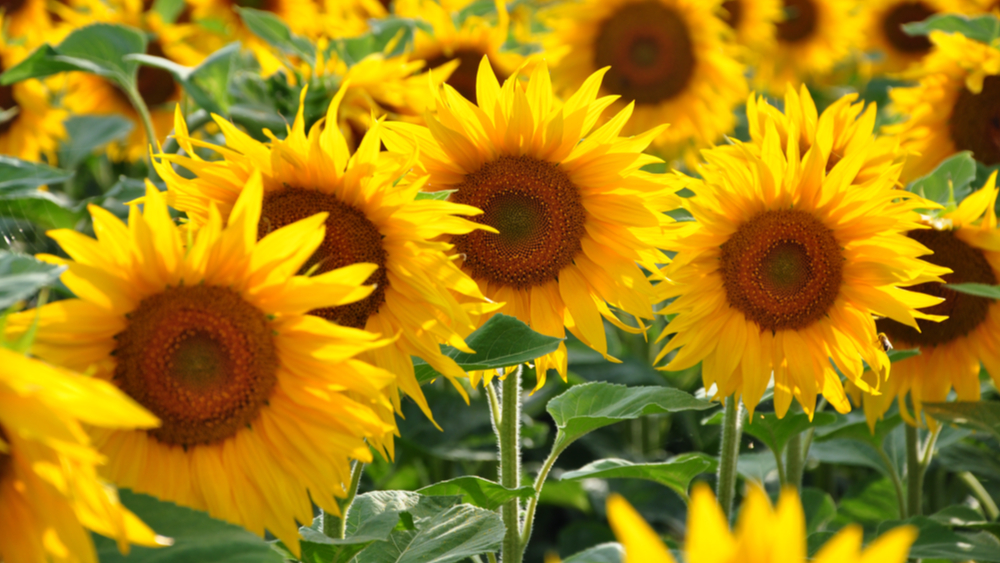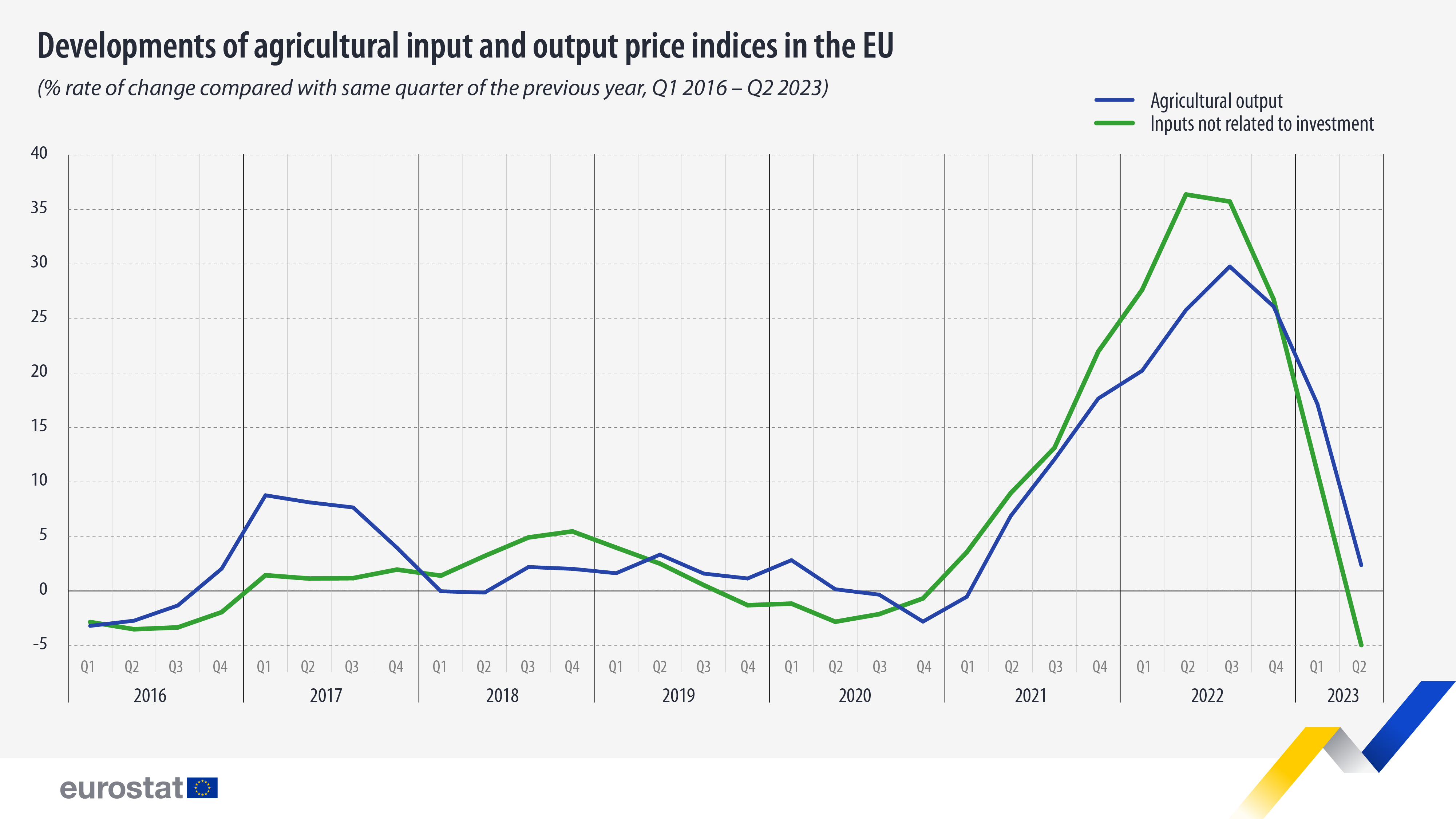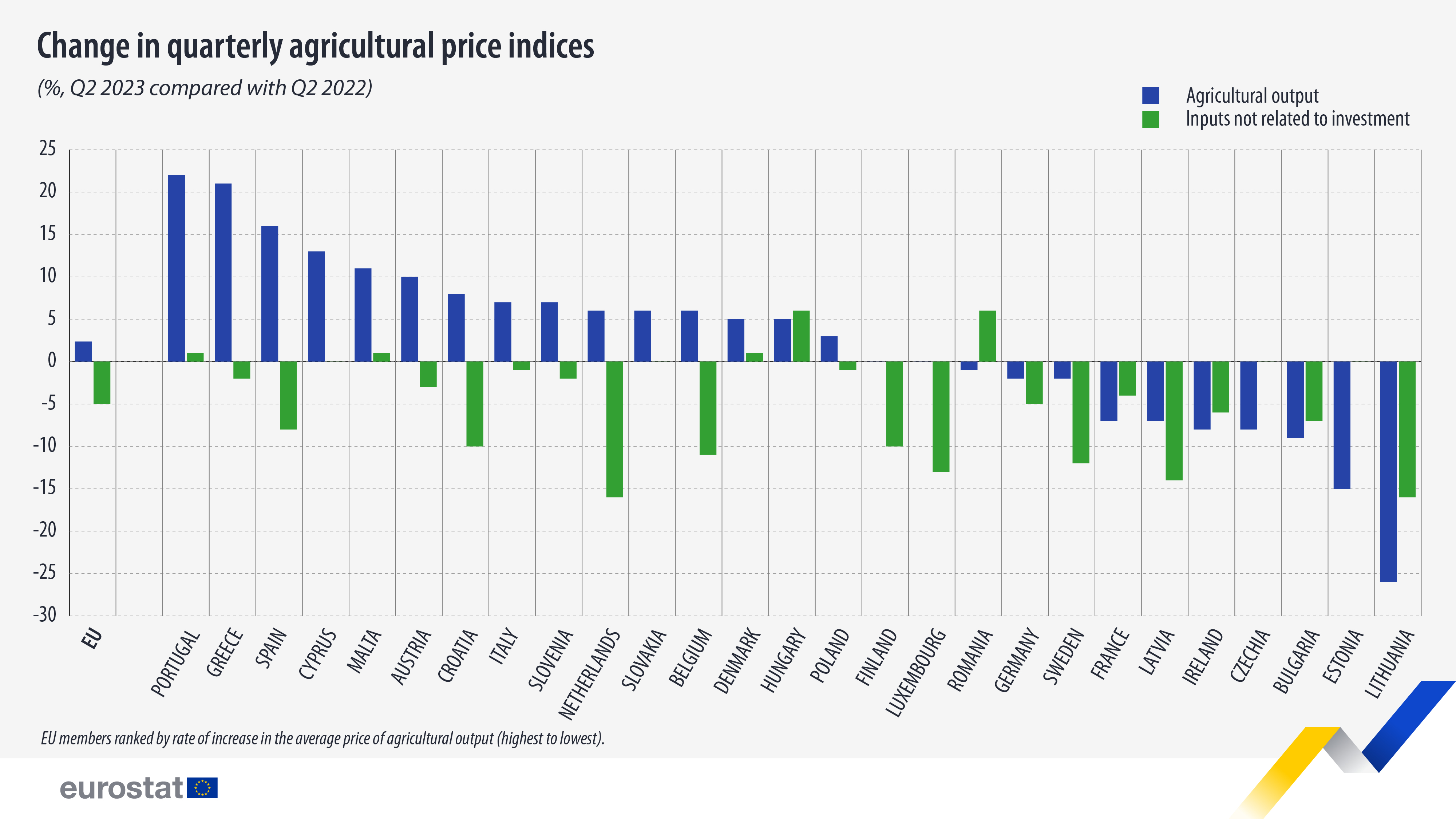Acute slowdown in agricultural output price rises

Agricultural price indices data released by Eurostat today show that the recent price growth of agricultural commodities in the EU slowed sharply in the second quarter of 2023 (when compared with the same quarter of 2022). Furthermore, the average price of goods and services currently consumed in agriculture (input not related to investment) declined between Q2 2022 and Q2 2023, the first decrease since Q4 2020.
These latest data suggest a further settling down of global agricultural markets after a period of disruption, which was characterised by strong agricultural output and input price growth. Note that output prices are the prices that farmers get at the farm gate.
Source datasets: apri_pi15_outq and apri_pi15_inq
Between the second quarter of 2022 and the second quarter of 2023, the average EU price of agricultural products as a whole (output) increased by 2%. This represented a significantly lower rate of increase compared with the previous quarter when the average price increased by 17% (first quarter of 2023 compared with the first quarter of 2022).
The sharpest price rises in the second quarter of 2023 among the main groups of output products were for citrus fruit (an average +89%), olive oil (+48%), and potatoes (+38%). These price rises largely reflected drought-affected volumes. Among other products, it is also worth highlighting the strong price rises for eggs (+31%) and pigs (+28%). By contrast, the price of cereals decreased (- 31%), whilst those of poultry (+4%) and milk (-2%) remained more stable.
Over the same period, the average price of goods and services currently consumed in agriculture (input not related to investment) decreased by 5%. This decline followed on from a slowdown in price growth in the previous quarter, albeit when prices increased by 11% (first quarter of 2023 compared with the first quarter 2022).
Among the inputs not related to investment, the sharpest rates of price decline were fertilisers and soil improvers (-23%), energy and lubricants (-13%), and animal feedingstuffs (-5%).
At the national level, a majority of EU countries (17 out of 27) continued to experience price increases in agricultural products in the second quarter of 2023 compared with second quarter of 2022. The fastest rates of increase were recorded in Portugal (+22%), Greece (+21%) and Spain (+16%), countries that experienced drought conditions. In contrast, Lithuania (-26%) and Estonia (-15%) recorded the sharpest price declines.
Source dataset: apri_pi15_outq and apri_pi15_inq
Regarding inputs not related to investment, the sharpest rates of increase in average prices compared with the second quarter of 2022 were reported in Hungary and Romania (both +6%), while Lithuania and the Netherlands registered the steepest rates of decline (both -16%).
For more information
- Thematic section on agriculture
- Database on agriculture
- Statistics 4 beginners workbook on inflation
- EU solidarity with Ukraine
If you have any queries, please visit our contact us page.


